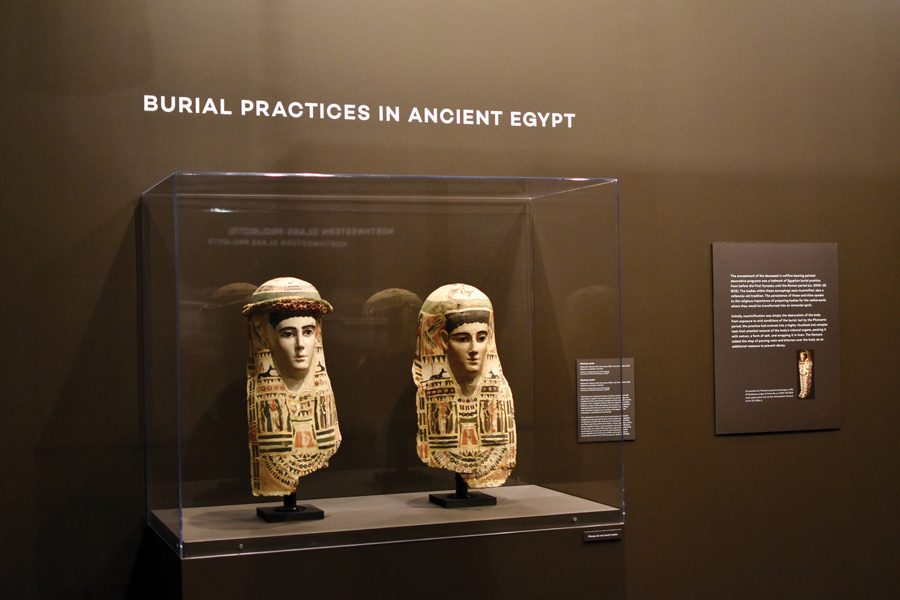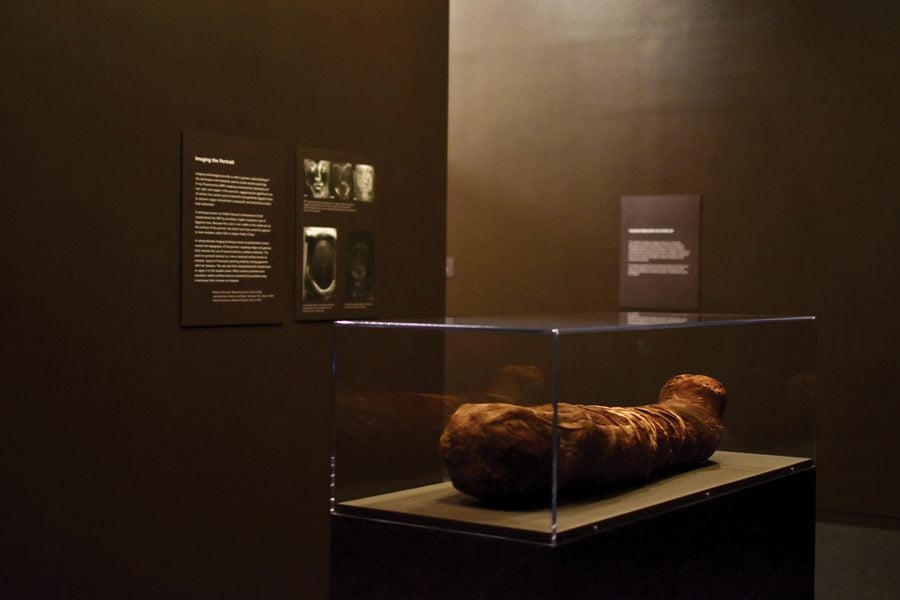‘Paint the Eyes Softer’ features local mummy and student research
January 17, 2018
A&E
Essi Rönkkö was visiting the Styberg Library at the Garrett-Evangelical Theological Seminary in October 2016 to check out a book about panel portraits when she stumbled across what she calls “Northwestern’s best worst-kept secret” — a nearly 2,000-year-old mummy of a five-year-old girl housed at the library.
This happenstance discovery became the final puzzle piece to complete the ancient art exhibition Rönkkö was co-curating at The Block Museum of Art: “Paint the Eyes Softer.”
The exhibition features seven panel portraits from the Fayum region of ancient Egypt, on loan from the University of California, Berkeley. These portraits date to the second century, and were used to adorn the mummies of the deceased subjects.
Four years ago, McCormick Prof. Marc Walton, the exhibition’s co-curator, unearthed his new passion project in further exploring the intersection between science and art. He began working with the Northwestern University/Art Institute of Chicago Center for Scientific Studies in the Arts to better understand the structure and composition of Egyptian panel portraits. In 2016, he approached the Block Museum with possibility of displaying the portraits.
“(The portraits) are stunning objects; when you look at them, it really brings the person back to you,” Walton said. “I thought this would be a great idea for an exhibition.”
Rönkkö had recently begun working at the Block Museum as a curatorial associate when Walton started planning the exhibition. She said she was instantly drawn to the project because of her background in ancient art and Roman history.
A few months after the project’s inception, Walton and Rönkkö brought in classics Prof. Taco Terpstra, as the third co-curator.
“We wanted to make sure it wasn’t just a science show, so we were looking for collaborators in the classics,” Rönkkö said. “It was a wonderful coincidence that Professor Terpstra, who was new to Northwestern at that point, specializes in trade in the ancient world.”

Ancient Egyptian panel portraits on display at “Paint the Eyes Softer.” These portraits used to adorn the mummies of the deceased subjects.
In addition to the panel portraits, the exhibition features two traditional-style mummy masks, two panel paintings from a later period, various writing objects and the surprise key element: the Hibbard mummy.
Rönkkö said she had just finalized the exhibition checklist when she came across the Hibbard mummy at the Styberg Library.
“I saw this child mummy, and it looked very much like the ones with the painted portraits,” Rönkkö said. “It’s from an excavation that took place 10 years later than the Berkeley materials and it’s from a site that’s 10 miles away.”
The discovery of the mummy inspired an advanced undergraduate research seminar, taught by Walton and Terpstra in fall 2017. The seminar was offered to McCormick School of Engineering and Weinberg College of Arts and Sciences students.
“We had engineers and we had classicists, and that itself provided an interesting dynamic,” Terpstra said. “Students heard and did things outside their comfort zones.”
The students in the seminar did research on the textiles, soil and pigments of the Hibbard mummy. Their findings are displayed on panels beside the mummy at the exhibition.
The exhibition also features an iPad equipped with an augmented reality app. Visitors can point the camera at the mummy and see data from CT scans mapped onto the mummy. McCormick senior Kyle Engelmann and doctoral candidate Nathan Matsuda developed the augmented reality tour as an independent study this fall.
The exhibition’s soundscape was designed in a School of Communication seminar, leading Rönkkö to note that the co-curators worked with almost every school in the university throughout the project.
“I don’t think in any other kind of museum you could go to a professor at the medical school to see if you could get the mummy scanned at the hospital,” Rönkkö said. “It’s one of those examples of what an academic museum can do on a campus.”
Email: [email protected]


